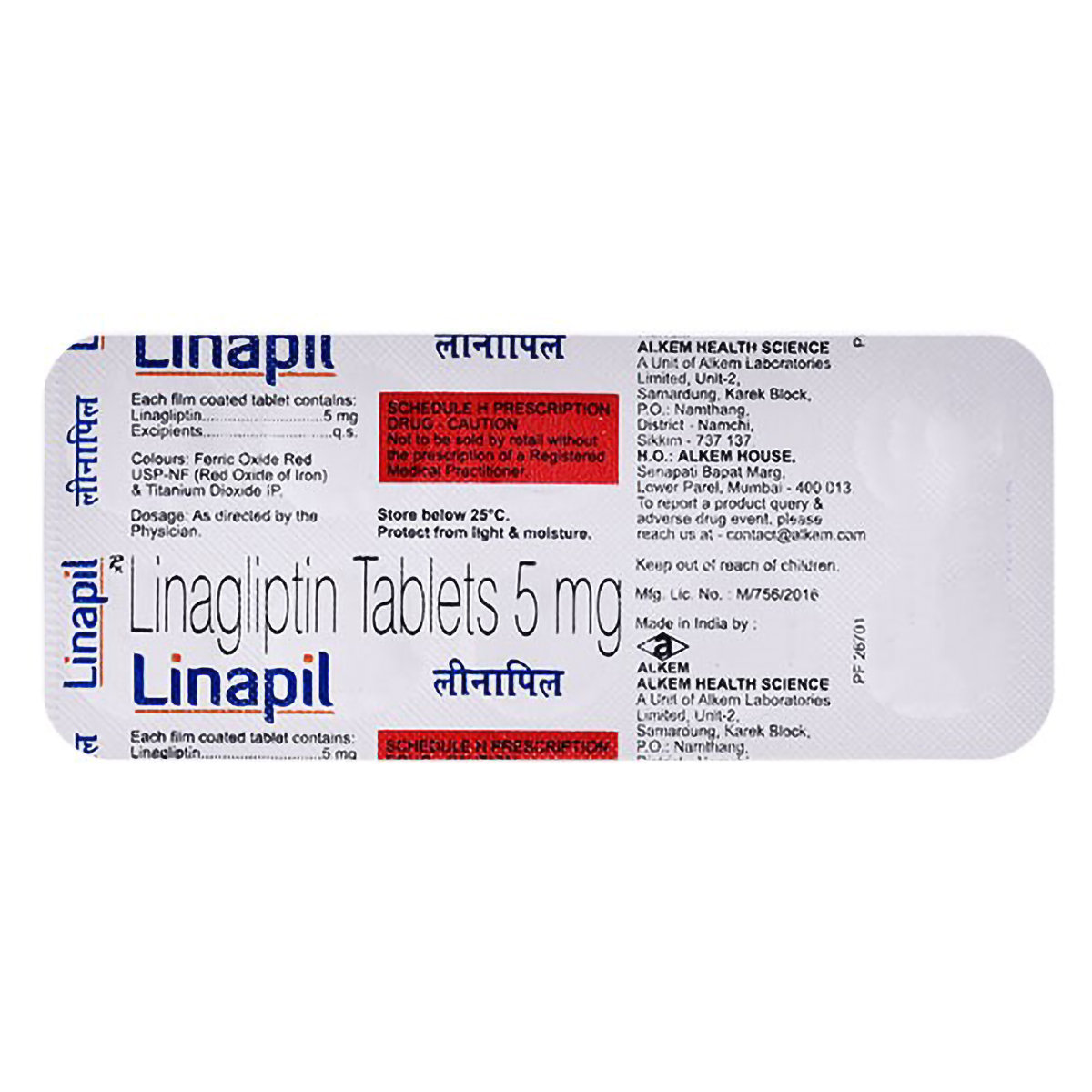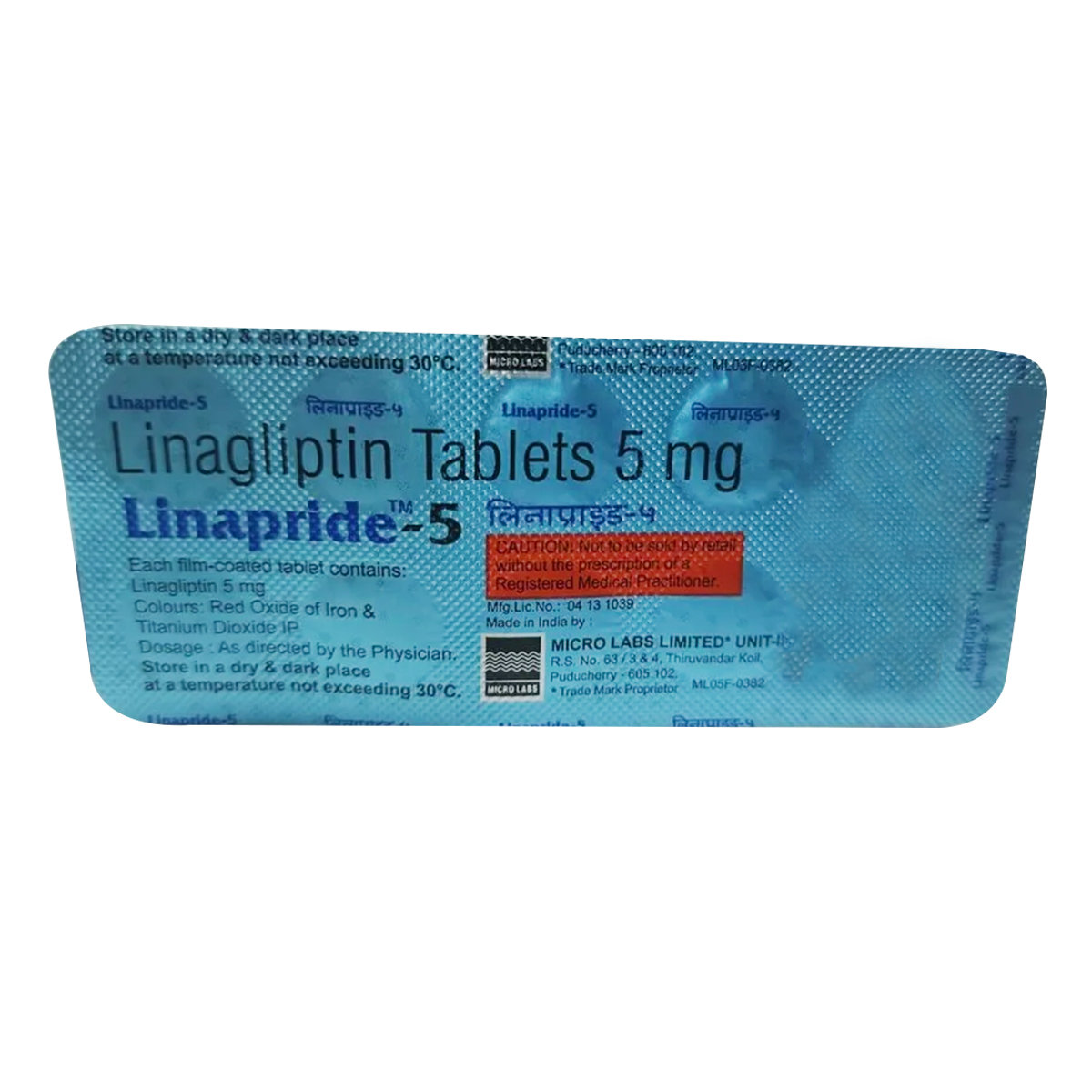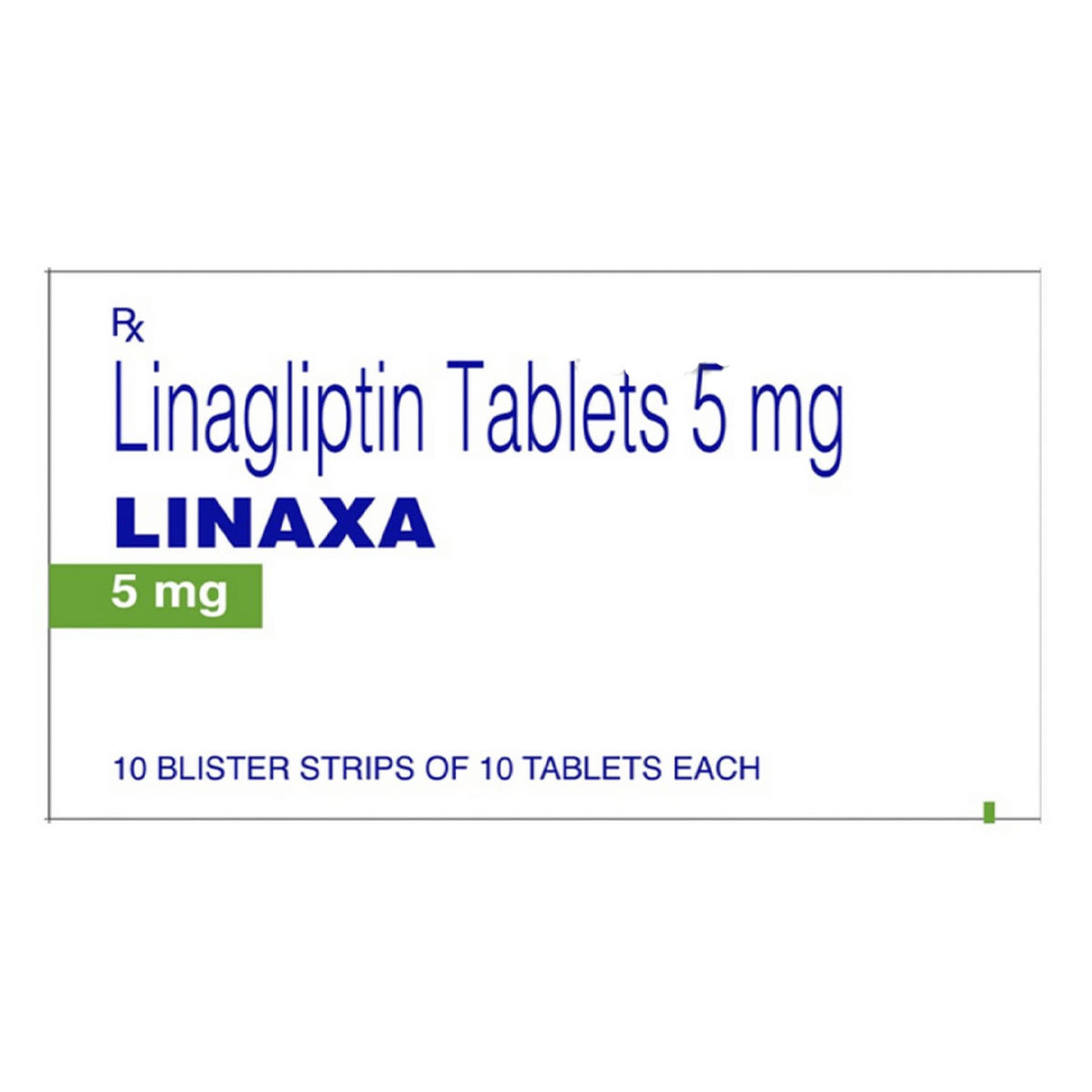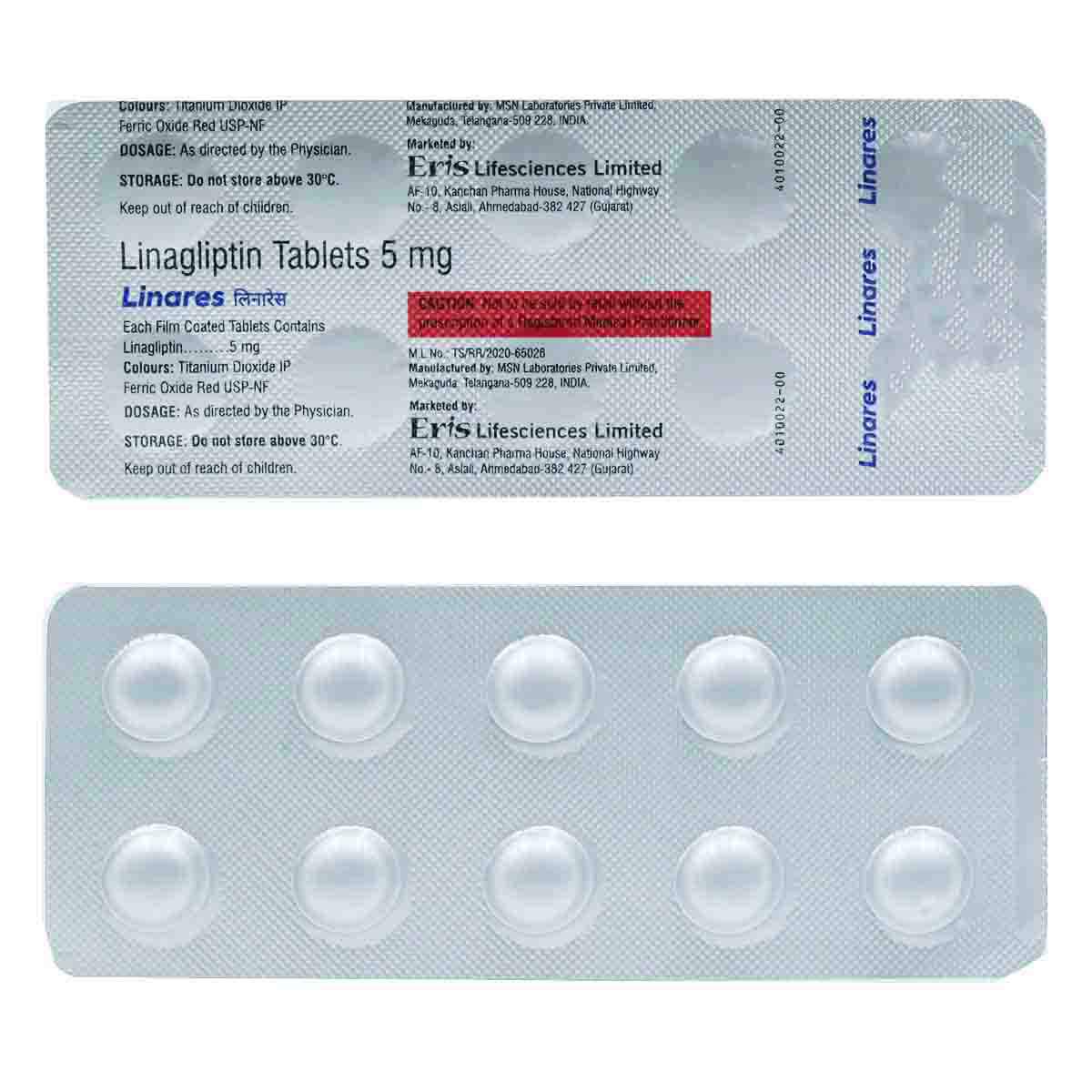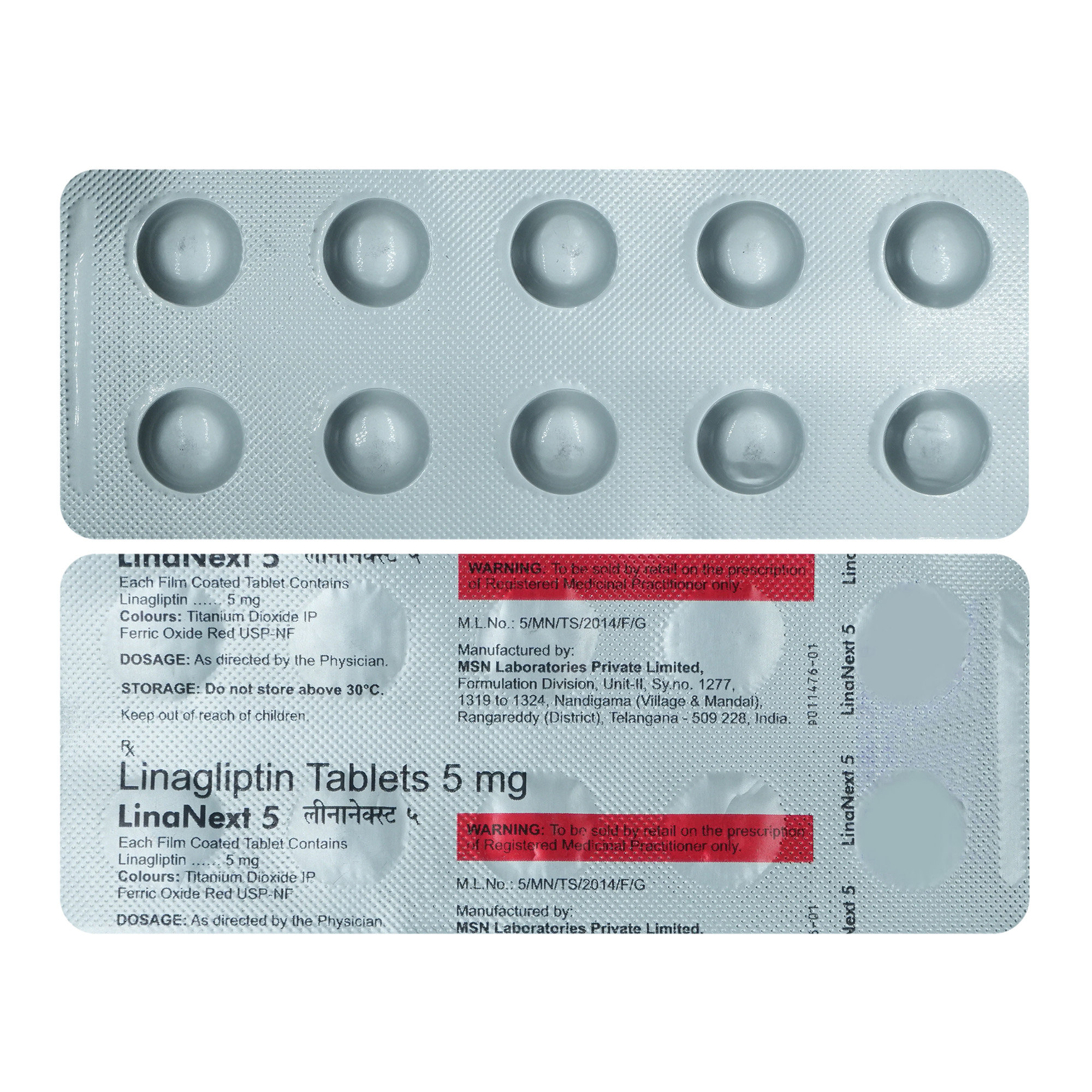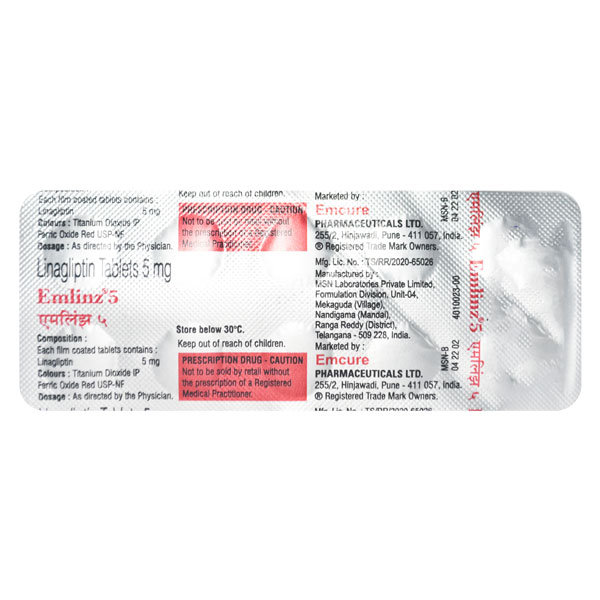L-Tin-5 Tablet 10's


MRP ₹199
(Inclusive of all Taxes)
₹29.9 Cashback (15%)
Provide Delivery Location
Online payment accepted
 Prescription drug
Prescription drugWhats That
Composition :
Manufacturer/Marketer :
Consume Type :
Return Policy :
About L-Tin-5 Tablet 10's
L-Tin-5 Tablet 10's is an anti-diabetic medication primarily used to treat type 2 diabetes in adults along with diet and lifestyle changes. It is used alone or in combination with other drugs to lower blood sugar levels. People with type 2 diabetes either do not produce enough insulin, or the insulin produced cannot perform its function in the body (insulin resistance). Middle-aged or older individuals are most likely to suffer from type 2 diabetes, also known as adult-onset diabetes.
L-Tin-5 Tablet 10's contains Linagliptin, which belongs to the class of dipeptidyl peptidase-4 (DPP-4) inhibitors used L-Tin-5 Tablet 10's is prescribed for the condition of type 2 diabetes when diet and exercise alone cannot control their blood sugar levels. It works by blocking the action of DPP-4 (an enzyme that destroys the hormone 'Incretin'). The enzyme 'Incretins' helps produce more insulin only when required and reduces the liver's blood sugar level when not needed. L-Tin-5 Tablet 10's should not be used in patients with type 1 diabetes and for the treatment of diabetic ketoacidosis.
Take L-Tin-5 Tablet 10's as prescribed. However, it should be taken at the same time of the day each time for best results. Your doctor will recommend you how often you take L-Tin-5 Tablet 10's based on your medical condition. The most common side effects of L-Tin-5 Tablet 10's are hypoglycaemia (low blood glucose levels), upper respiratory tract infection, nasopharyngitis (infection of nose and throat with common cold), and headache.
L-Tin-5 Tablet 10's should not be stopped even if you feel better, without consulting your doctor as sugar level keeps changing. If you stop taking L-Tin-5 Tablet 10's abruptly, it may increase your sugar levels, which could further increase the risk of eyesight loss (retinopathy), kidney (nephropathy) and nerve damage (neuropathy). L-Tin-5 Tablet 10's should not be taken if you have severe kidney or liver disease. Please inform your doctor if you have any heart disease is or planning to get pregnant or breastfeeding.
Uses of L-Tin-5 Tablet 10's
Directions for Use
Key Benefits
L-Tin-5 Tablet 10's is primarily used to treat Type 2 diabetes mellitus. It contains Linagliptin, which belongs to the class of dipeptidyl peptidase-4 (DPP-4) inhibitors used L-Tin-5 Tablet 10's is prescribed for type 2 diabetes when diet and exercise alone cannot control their blood sugar levels. It works by blocking the action of DPP-4 (an enzyme that destroys the hormone ‘Incretin’). The enzyme ‘Incretins’ helps produce more insulin only when required and reduces the liver's blood sugar level when not needed. L-Tin-5 Tablet 10's should not be used in patients with type 1 diabetes and for the treatment of diabetic ketoacidosis. Thus, L-Tin-5 Tablet 10's plays a vital role in controlling blood sugar levels and prevents serious complications of diabetes like eyesight loss (retinopathy), kidney (nephropathy), nerve damage (neuropathy), diabetic foot ulcer and delayed wound healing.
Storage
- Avoid driving or operating machinery or activities that require high focus until you know how the medication affects you.
- Maintain a fixed sleeping schedule, create a relaxing bedtime routine and ensure your sleeping space is comfortable to maximize your sleep quality.
- Limit alcohol and caffeine as these may worsen drowsiness and disturb sleep patterns.
- Drink plenty of water as it helps with alertness and keeps you hydrated and for overall well-being.
- Moderate physical activity can improve energy levels, but avoid intense workouts right before bedtime.
- Inform your doctor about the common cold symptoms you're experiencing due to medication.
- Your doctor may adjust your treatment plan, which could include changing your medication, adding new medications, or offering advice on managing your symptoms.
- Practice good hygiene, including frequent handwashing, avoiding close contact with others, and avoiding sharing utensils or personal items.
- Drink plenty of fluids, such as warm water or soup, to help thin out mucus.
- Get plenty of rest and engage in stress-reducing activities to help your body recover. If your symptoms don't subside or worsen, consult your doctor for further guidance.
- Rest well; get enough sleep.
- Eat a balanced diet and drink enough water.
- Manage stress with yoga and meditation.
- Limit alcohol and caffeine.
- Physical activities like walking or jogging might help boost energy and make you feel less tired.
- Inform your doctor about dry mouth symptoms. They may adjust your medication regimen or prescribe additional medications to manage symptoms.
- Drink plenty of water throughout the day to help keep your mouth moist and alleviate dry mouth symptoms.
- Chew sugar-free gum or candies to increase saliva production and keep your mouth moisturized.
- Use saliva substitutes, such as mouthwashes or sprays, only if your doctor advises them to help moisturize your mouth and alleviate dry mouth symptoms.
- Avoid consuming smoking, alcohol, spicy or acidic foods, and other irritants that may aggravate dry mouth symptoms.
- Schedule regular dental check-ups to keep track of your oral health and handle any dry mouth issues as they arise.
- Inform your doctor about dizziness symptoms. They may adjust your medication regimen or prescribe additional medications to manage symptoms.
- Follow your doctor's instructions for taking medication, and take it at the same time every day to minimize dizziness.
- When standing up, do so slowly and carefully to avoid sudden dizziness.
- Avoid making sudden movements, such as turning or bending quickly, which can exacerbate dizziness.
- Drink plenty of water throughout the day to stay hydrated and help alleviate dizziness symptoms.
- If you're feeling dizzy, sit or lie down and rest until the dizziness passes.
- Track when dizziness occurs and any factors that may trigger it, and share this information with your doctor to help manage symptoms.
Drug Warnings
L-Tin-5 Tablet 10's should not be taken if you are allergic to L-Tin-5 Tablet 10's or any of its ingredients. Please inform your doctor if you are pregnant or breastfeeding before starting L-Tin-5 Tablet 10's. Prolonged intake of L-Tin-5 Tablet 10's may cause acute pancreatitis (swollen pancreas), and critical kidney problem. Increased risk of hypoglycaemia (low blood sugar level) can occur when L-Tin-5 Tablet 10's is added to other anti-diabetic agents or insulin therapy. In this case, your doctor may adjust the dose of L-Tin-5 Tablet 10's. Severe allergic reactions might occur in some patients taking L-Tin-5 Tablet 10's like anaphylaxis, angioedema (swelling under the skin), and exfoliative skin conditions including Stevens-Johnson syndrome. Safety and efficacy of L-Tin-5 Tablet 10's in children under 18 years have not been established, so it should not be given to them. Patients taking digoxin (a heart medicine) with L-Tin-5 Tablet 10's should be closely monitored as severe drug interaction has been observed. L-Tin-5 Tablet 10's should not be used in patients with type 1 diabetes and for the treatment of diabetic ketoacidosis.
Drug-Drug Interactions
Drug-Drug Interactions
Login/Sign Up
Using esketamine together with L-Tin-5 Tablet may increase side effects (drowsiness, confusion, difficulty concentrating, and impairment in thinking, judgment, reaction speed, and motor coordination).
How to manage the interaction:
Taking L-Tin-5 Tablet with Esketamine together can result in an interaction, but it can be taken if a doctor has advised it. Do not discontinue any medications without consulting a doctor.
Drug-Food Interactions
Drug-Food Interactions
Login/Sign Up
Diet & Lifestyle Advise
- Fill your half plate with starchy veggies, a quarter with proteins, and a quarter with whole grain.
- Eat at regular intervals. Do not take a long gap between a meal or snack.
- Monitor your blood sugar level regularly, especially when there are lots of fluctuations.
- Invest at least 150 min of moderate-intensity physical activity or one hour and 15 minutes of high-intensity exercise every week.
- Lose weight gradually to achieve a healthy body mass index (18.5 to 24.9).
- Replace refined carbohydrates containing whole-grain foods and increase the intake of fruits and veggies and other fiber-enriched foods.
- Reduce intake of saturated fat (or hidden fats) in food like chips, crisps, pastries, biscuits, and samosas. Choose omega 3 fatty acid-containing oils for daily cooking. You can use palm oil, mustard oil, groundnut oil, rice bran oil and safflower oil for frying.
- Do not take stress as it may elevate your blood sugar level. You can adopt stress management techniques like mindfulness to control stress-related blood sugar changes.
- Opt for low-fat dairy products (low-fat yogurt, fat-free milk, and cheese, etc.).
- Keep your blood pressure as normal (140/90) as possible as it reduces the risk of cardiovascular diseases in diabetes patients.
Side Effects of L-Tin-5 Tablet 10's
- Hypoglycaemia (low blood glucose levels)
- Upper respiratory tract infection
- Nasopharyngitis (infection of nose and throat with common cold)
- Headache
Habit Forming
Therapeutic Class
All Substitutes & Brand Comparisons
RX
Juslina-5 Tablet 10's
Mankind Pharma Pvt Ltd
₹76.5
(₹6.89 per unit)
65% CHEAPERRX
Dynaglipt L Tablet 10's
Mankind Pharma Pvt Ltd
₹77
(₹6.94 per unit)
65% CHEAPERRX
Linapil 5 mg Tablet 10's
Alkem Laboratories Ltd
₹97.5
(₹8.78 per unit)
55% CHEAPER
Product Substitutes
Drug-Diseases Interactions
Drug-Diseases Interactions
Login/Sign Up
FAQs
L-Tin-5 Tablet 10's contains Linagliptin, which belongs to the class of dipeptidyl peptidase-4 (DPP-4) inhibitors used L-Tin-5 Tablet 10's is prescribed for the condition of type 2 diabetes when diet and exercise alone cannot control their blood sugar levels. It works by blocking the action of DPP-4 (an enzyme that destroys the hormone ‘Incretin’). The enzyme ‘Incretins’ helps produce more insulin only when required and reduces the liver's blood sugar level when not needed. L-Tin-5 Tablet 10's should not be used in patients with type 1 diabetes and for the treatment of diabetic ketoacidosis.
Type 2 diabetes is a common form of diabetes. The body cannot make a sufficient amount of insulin and the body's insulin does not function properly. The blood glucose level increases, and symptoms such as frequent urination, increased thirst, and increased hunger . Diabetes, if left untreated or not treated properly, can cause long-term complications like nerve damage, kidney damage, eye damage, foot problems, and fall under a higher risk of developing heart diseases.
Hypoglycemia refers to low blood sugar levels. L-Tin-5 Tablet 10's can cause hypoglycemia. The symptoms of hypoglycemia include nausea, headache, irritability, hunger, sweating, dizziness. Hypoglycemia can occur if you miss or delay your food, drink alcohol, over-exercise or take other antidiabetic medicine along with this medicine. People with diabetes are advised to keep a quick sugar source like glucose tablets, honey or fruit juice.
L-Tin-5 Tablet 10's should be avoided in patients who are allergic to any of this medicine's components or excipients. It should be avoided in patients suffering from moderate to severe kidney disease and in patients with underlying metabolic acidosis, including diabetic ketoacidosis, consult your doctor for further advice.
No. L-Tin-5 Tablet 10's is only prescribed to treat type 2 diabetes, also called 'non-insulin-dependent diabetes.'
In type 1 diabetes, cells in the pancreas that make insulin are destroyed, and the body is unable to make insulin. Insulin is a hormone that helps your body's cells use glucose for energy. The condition is usually diagnosed in children and young people, so it used to be called juvenile diabetes.
Drug-Drug Interactions Checker List
- DIGOXIN
- FUROSEMIDE
- BUDESONIDE
- RIFAMPICIN
- PHENYTOIN
- TOPIRAMATE
- LAMOTRIGINE
- INSULIN
- RANOLAZINE
Special Advise
- Keep your blood pressure as normal (140/90) as possible as it reduces the risk of cardiovascular diseases in diabetes patients.
- Monitor your blood sugar level regularly especially when there are lots of fluctuations.
Disease/Condition Glossary
Diabetes (Type 2): It is a condition where the body cannot make sufficient insulin, or the insulin that it makes doesn't work properly or is utilized by our body. This can cause high blood sugar levels (hyperglycemia). Type 2 diabetes symptoms include increased thirst, frequent urination at night, slow wound healing, increased hunger, fatigue, and blurred vision. There may be weight gain in some cases, while in rare cases, weight loss may be observed. The complication of type 2 diabetes also includes neuropathy (nerve problems), nephropathy (kidney problems), and retinopathy (damaged retina of eyes or blindness), loss of limbs, sexual dysfunction, and increase the chance of heart attack or stroke.

Have a query?
Alcohol
Safe if prescribed
Alcohol should not be consumed along with L-Tin-5 Tablet 10's as it is known to interact and lead to unpleasant side effects.
Pregnancy
Consult your doctor
L-Tin-5 Tablet 10's is a category B pregnancy medication. So, its safety in pregnant women is not established. So, it should be taken only if prescribed by a doctor.
Breast Feeding
Consult your doctor
It is not known whether L-Tin-5 Tablet 10's passes through the breast milk or not. So, it should be taken only if prescribed by a doctor.
Driving
Safe if prescribed
L-Tin-5 Tablet 10's has no influence on the ability to drive and use machines. However, dizziness and drowsiness have been reported, which may affect your ability to drive or use machines.
Liver
Consult your doctor
If u have or had a history or evidence of any liver-related diseases, please consult the doctor before taking medicine.
Kidney
Consult your doctor
If u have or had a history or evidence of any kidney-related diseases, please consult the doctor before taking medicine.
Children
Safe if prescribed
L-Tin-5 Tablet 10's is not recommended for children below the age of 18 years.


